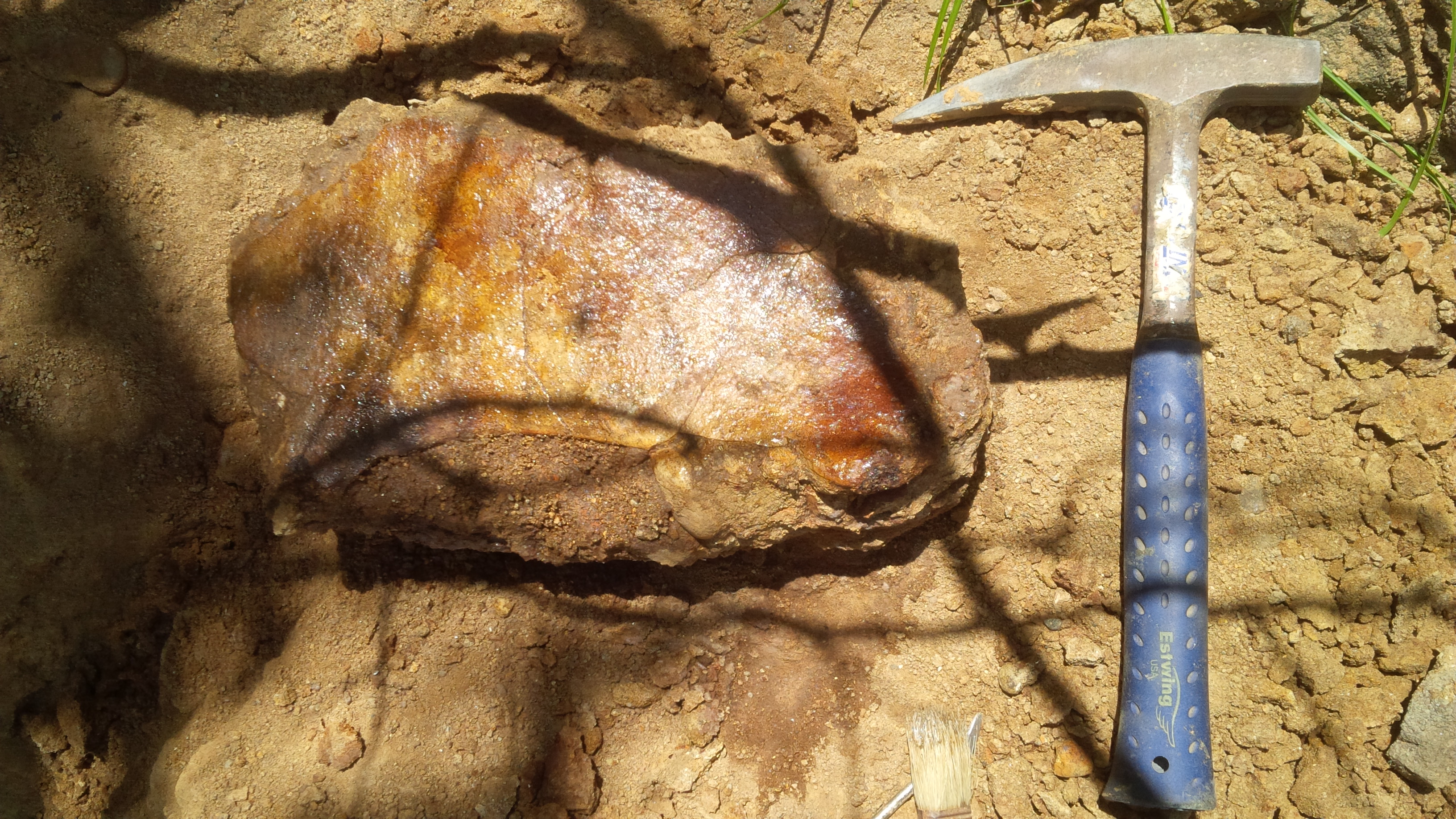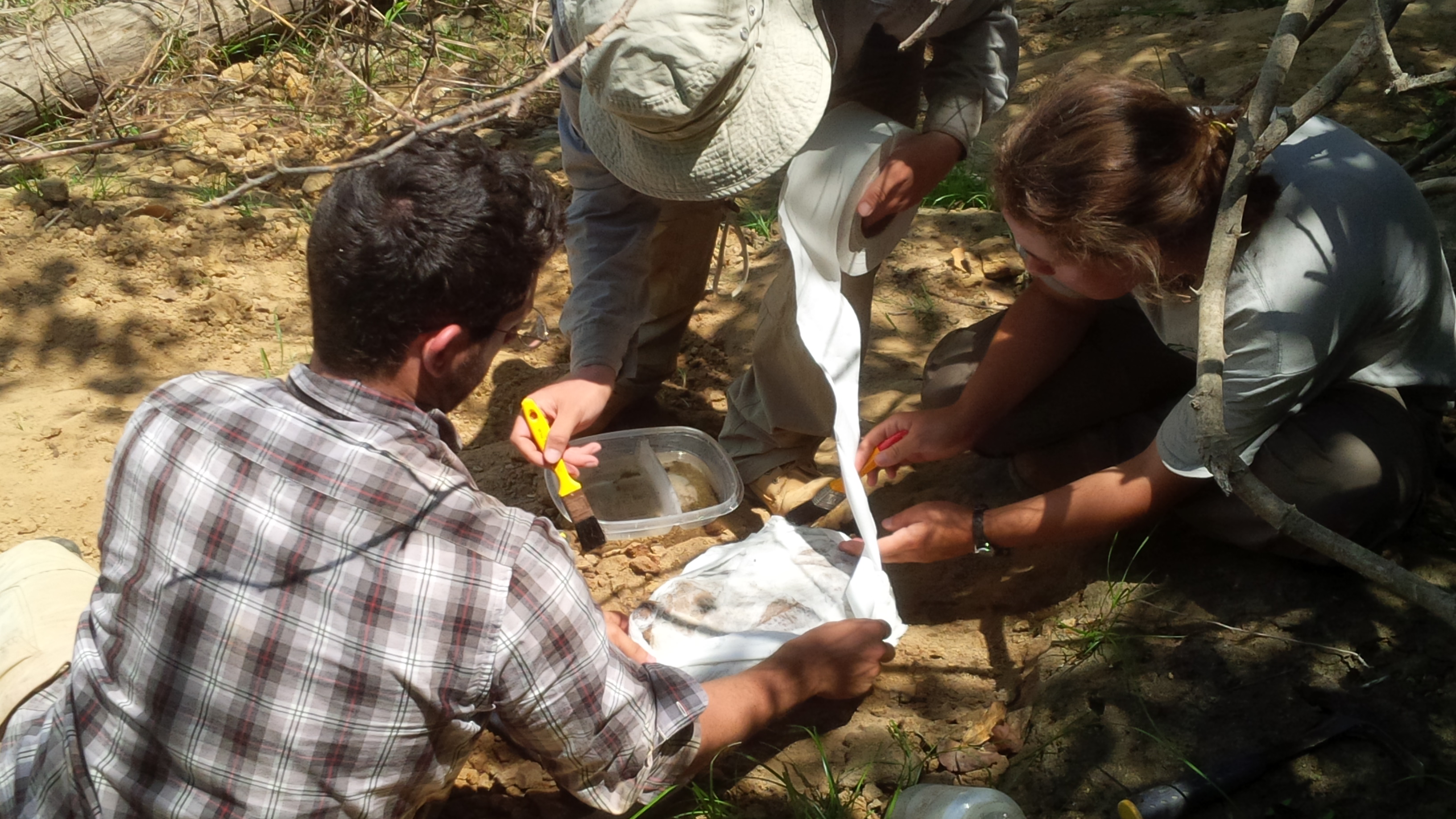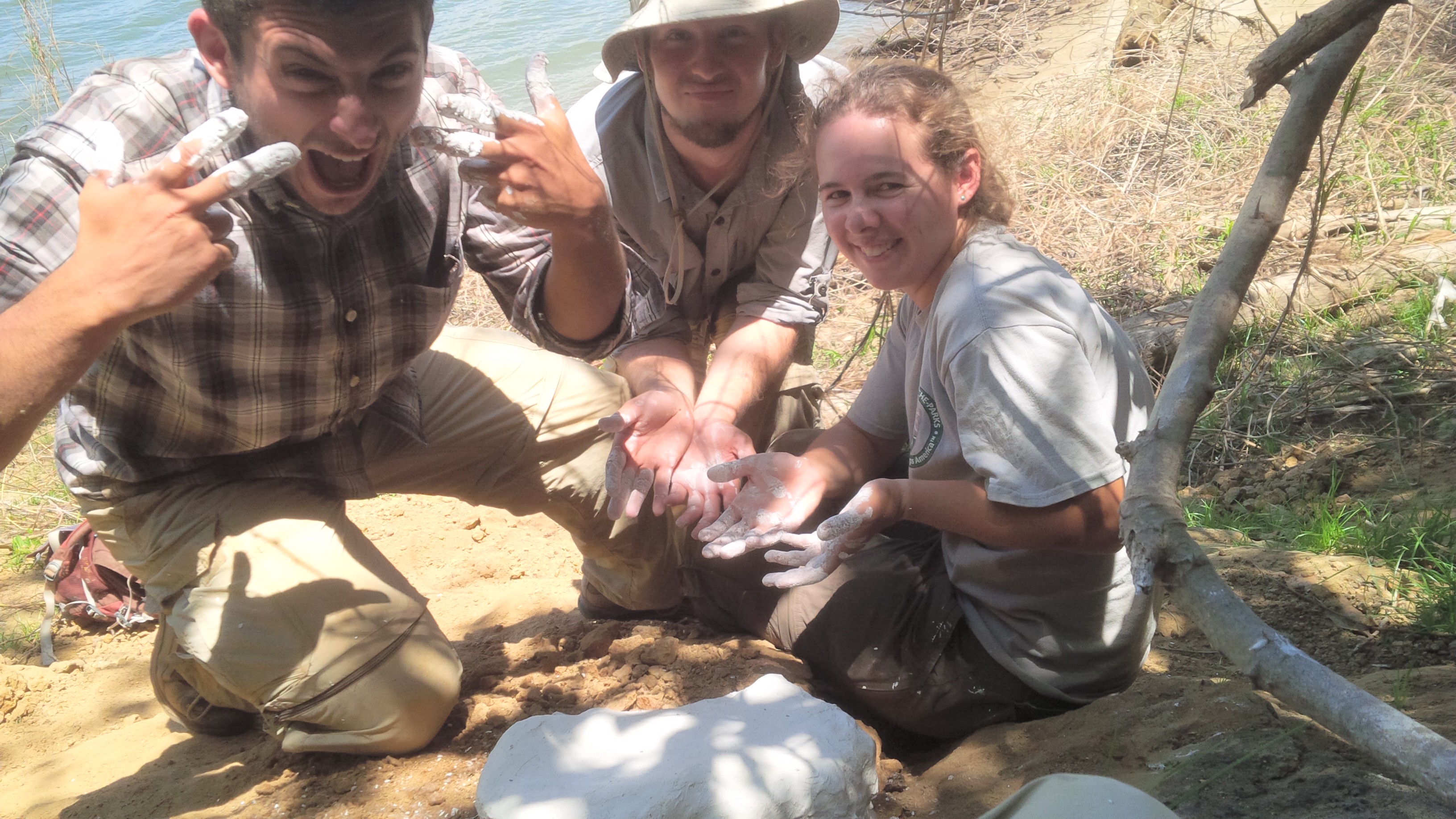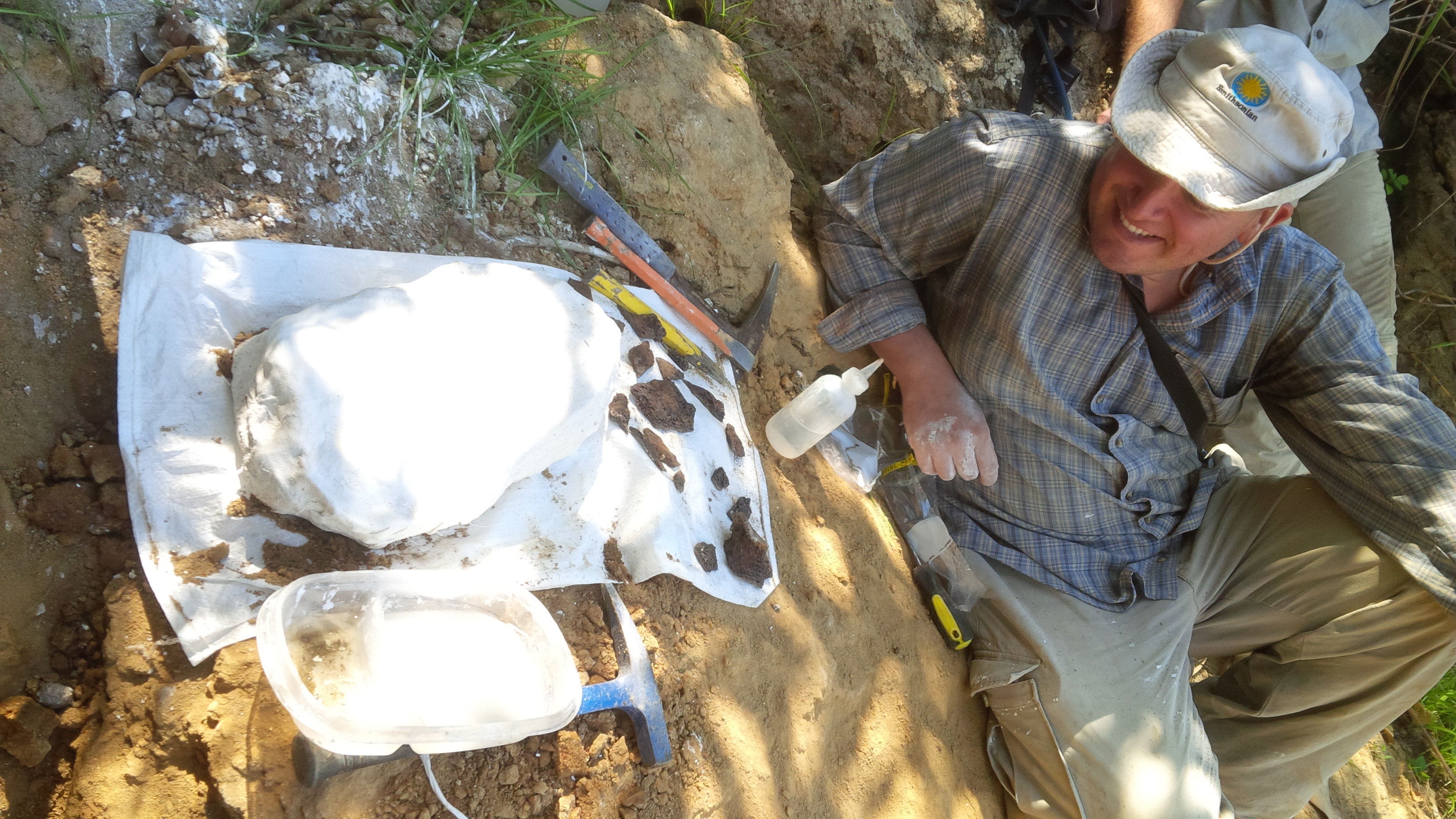Today was yet another beautiful day at Lago Alajuela, where we have spent the last two days searching for fossils from the relatively unexplored Alajuela Formation. This site hosts an amazing array of marine fossils ranging from mollusks and sharks to turtles and crocodiles, as well as the occasional terrestrial vertebrate. We were fortunate to have this opportunity, as water levels are usually too high to expose a decent amount of the outcrops due to either excessive rainfall or water not being released from the dam which is used to fill the canal. The hunt was on!

From the beginning the findings were good. Within minutes I was able to locate turtle carapace and ray teeth. Sophie and Adam were able to locate a very large section of turtle carapace along with an assortment of other turtle bone fragments as well, but little did we know the best was yet to come. Jorge Moreno dared to dig where no one had dared before, and came across a large flat bone in the upper sandstone. We believe it may be a section of a shoulder girdle or pelvic bone belonging to a large mammal such as a gomphothere. Due to the size of this bone a plaster jacket was required for removal.

The second stage of the plaster jacket process whereby the tissue paper is dampened and added as a base coat to protect the fossil.
This took place in several steps beginning with the clearing of surrounding rock to create a pedestal to make separation from the substrate easier later on. The next phase was to cover the specimen in dampened tissue paper to act as a buffer from the fossil and the plaster to be added, as well as insulation for protection. Last but not least came the plaster bandages. We soaked and carefully adhered the plaster bandages around the bone taking particular caution to keep it as tight to the surface as possible to prevent breaking post hardening.

After a long day that took me back to memories of spring break, we came out successful (and roughly 50 pounds of fossil finds heavier). It was a great adventure that we were fortunate enough to experience, and there are still many more discoveries to be made here. Until next time Lago Alajuela!

and as always Go Gators…
0 responses to “Full Plaster Jacket”